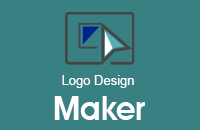
Marketing, Promotion, Advertisement:
Blueprint of a Brand
Portfolio roles that help brand architecture
Logo designs reflect the identity of a company. Brand strategy needs to be carefully integrated with logo design management. With multiple brands in a company, the problem is compounded. Each brand has to reflect the total image of the company, and yet differentiate itself from the rest of the brands in the company’s portfolio. Hence, strategic brand management with its critical component of Brand Architecture requires a three-point focus - synergy, clarity and leverage.
The Need for Brand Architecture
The rise of brand architecture can be linked to the fact that traditional marketing machinery is worn out because of changing consumer values, intense competition, complex markets, numerous distribution channels and a widening use of endorsed brands. Brands like Coca-Cola, Amul, Maruti operate in diverse markets over multiple channels and product lines. This results in confusion, both for the marketers and the consumers. Well-defined brand architecture hence becomes imperative.
What is Brand Architecture?
Brand architecture provides the blueprint for marketing decisions. Brand Architecture is the pictorial depiction of each relationship within and across the family of brands. Five dimensions define it - the brand portfolio, the roles of the portfolio brands, product-market context roles, the structure of the portfolio and portfolio graphics.
Brand Architecture Objectives
Creating power brands: Strong logo design offerings that synchronise with consumers’ logic and emotions, providing effective differentiation. Nestle distinguishes itself from competition, at the same time appealing to the masses.
Creating synergy: Well-developed brand architecture provides for the synergy of logo designs, reinforcing associations, which in turn results in cost efficiencies. For instance, Gillette uses the common thread of providing “the best a man can get” in terms of quality and speed across all product categories.
Providing clarity in product offerings: This is necessary to ensure a clear-cut identity among consumers.
Leveraging Brand Equity: Make the logo design work harder by increasing its impact. One way is through brand extensions that help to realise the complete value of the brand. A major function of brand architecture is to provide a strong framework to deal with brand extension opportunities (as the risks while extending are high).
Planning future growth: Brand architecture should plan for the brand’s future. It must be the foundation for making strategic advances in the marketplace.
The Brand Portfolio
The composition of a brand portfolio is imperative for the basic architectural parameter. Which brands to add or delete are major decisions to be taken. Building a brand requires adequate resources. If there are too many brands, there may not be enough resources to support them all. The task here is to choose and pick: Which logo designs will add value and which won’t? The brands that are not adding to the overall equity in any way need to be eliminated.
Portfolio Roles
Brand Portfolios incorporate different brand roles that create synergy. This imparts a strategic perspective to the brands. Various roles include those of a strategic logo design, linchpin logo design, silver bullet logo design, and a cash cow logo design. A logo design could even be a combination of more than one.
Strategic Brand: A brand that is projected to reap future sales and profits. It may be a laid-back logo design that is headed towards becoming a major one. Leesures is a strategic brand for Lee’s as it lays the foundation for a position in casual wear in India.
Linchpin Brand: A logo design that holds the entire organisation together. It is a number one brand that indirectly influences a business area providing a strong base for customer loyalty. Cadbury’s Dairy Milk is a linchpin brand for Cadbury’s as it controls a critical segment in the confectionery industry.
Silver Bullet logo design: A brand or sub-brand that positively influences the image of another brand. It can be a major factor in changing, creating or maintaining a brand image. HP’s laser jet resolution enhancement is a branded feature that instantly reflects on the image of HP being a breakthrough company in printer technology.
Cash Cow logo designs: Brands with significant customer bases that require less attention than other brands. The total sales may be on a decline, yet there are a group of hard-core loyal customers who do not leave the brand. The role of a cash cow brand is to generate resources that can be invested in other brands for future growth. Nivea Crème is one such example of a brand that has been extended to other skin-related products to provide resources for other brands by banking on its customer base. Brand architecture is the unification of branding decisions and media. This provides a sound foundation for the integration of all brands in a portfolio to synergise them into a powerful brand and identity.
Source: www.themanagementor.com/kuniverse/kmailers_universe/mktg_kmailers/BPS1804_1.htm





